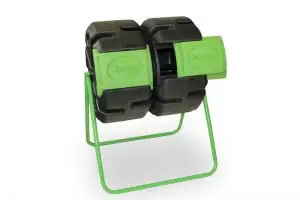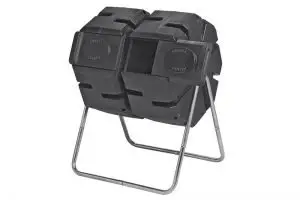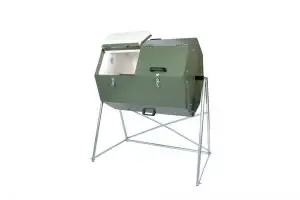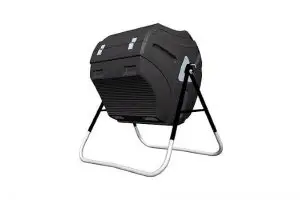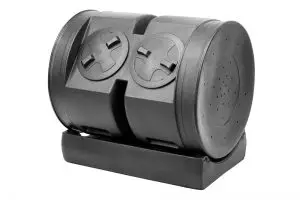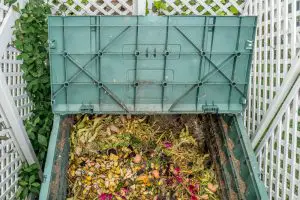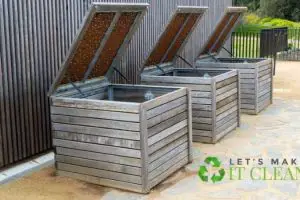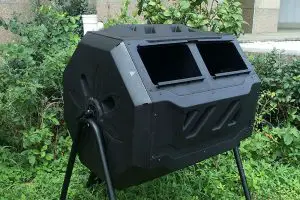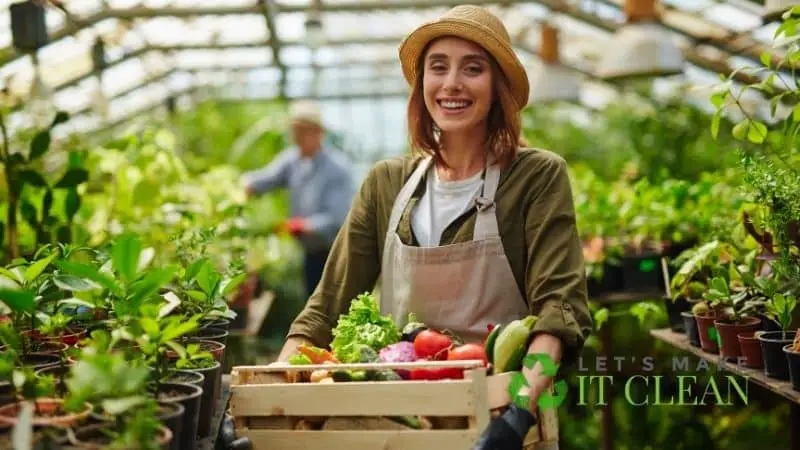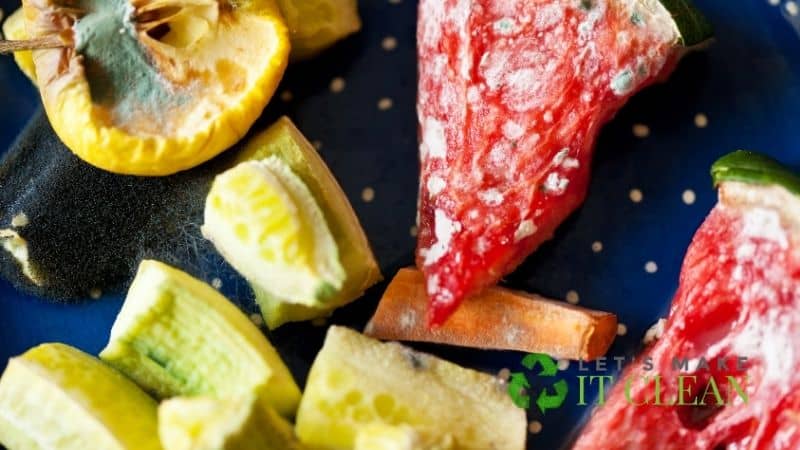Compost is a product not just of the items you put in the heap, but also of the actual composter as well.
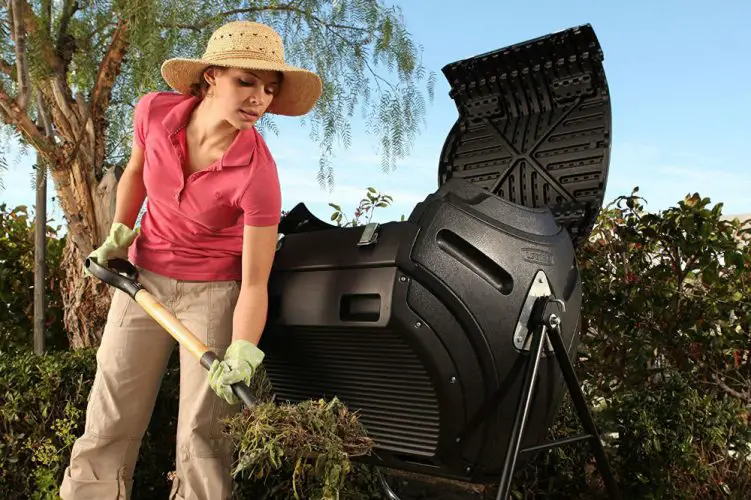
If you’re going to use a compost tumbler to make your own nutrient-packed fertilizer, it’s important to know the right ingredients for the best mix.
Quick Navigation
Due to the unique design of this equipment, a few tweaks can be necessary to ensure great results. Because of this, you might need this guide to walk you through the creation of good compost.
We’ve broken down below all the essentials you need to include in your compost tumbler to help you get started in making great use of your kitchen and yard waste.
What to Put in a Compost Tumbler
It’s essential to keep creating a diverse mixture so your finished product will be packed with various nutrients and microbial life. But what exactly should go inside a compost tumbler?
Here’s a quick guide to help you ensure that the plant food you’re making will turn out great.
1. Greens
The greens are what some consider as the core of compost. These will introduce nitrogen to your mixture. It will then provide the protein for the microbes that will do the dirty work in decomposing your waste.
Most kitchen and yard waste is classified as green waste. These are the very ingredients that have moisture in them, so they’ll also add that to the mix.
While in some cases, their moisture isn’t enough to keep the compost damp and warm, they can still add a significant amount of it to get the decomposition process rolling.
These are a few examples of green waste that you can add to your heap:
- Fruit and vegetable scraps
- Clippings of fresh green grass and leaves
- Food leftovers except for meat and bones
- Coffee grounds and tea leaves
- Animal manure (chicken, rabbit, hog, goat, cow, and horse)
- Hair or fur
- Seaweed
- Fish emulsion
- Wine or beer
2. Browns
Browns, on the other hand, are the dry, biodegradable waste that will help absorb the excess moisture from your heap. They’re also the source of carbon in your mix and will provide the energy the microbes in it need to get the job done.
If the kitchen is the primary source for your greens, the other parts of your home are great places where you can get a lot of browns. Some are still from the kitchen, but since these require dry biodegradable materials, you can get most of it in other areas.
Check out your laundry room, workshop, study area, garden, and even bedrooms for what you can turn into brown ingredients.
For browns, you can add the following:
- Shred paper
- Sawdust from untreated wood
- Wood chips
- Cardboard
- Eggshells
- Dead leaves (just avoid certain species with poison and those too leathery for quick decomposition
- Straw
- Old hay
Paper with some print on it can also be used as a compost ingredient. However, make sure that they only used vegetable oil-based ink as other inks can be toxic.
3. Compost Accelerators
When using compost tumblers, putting in some compost accelerators to your mix is also very important. These additions will speed up the process of introducing microbes to your pile, so it can start maturing right away. Some good examples of these ingredients include:
- Human urine
- Comfrey leaves
- Beer
- Raw milk
You can also just buy accelerators from your local gardening store if you want a surefire way to activate your compost heap.
What Not to Put in a Compost Tumbler
To really get a good idea of what should go in your compost tumbler, you might also want to learn about the different items that you shouldn’t put in your mix. These items can affect the decomposition process in various ways.
These are ones that have toxic ingredients that can survive composting. It can poison your plants and harm your health when consumed, so that’s a definite no-no.
Some will also cause the composting heap to smell awful, which can make your compost a health hazard. There are also others that will slow down the process by killing the microbes in the mix, so you should also avoid them.
These items that you should avoid are:
- Meats
- Pet excrement
- Weed seeds
- Citrus fruits
- Onions
- Glossy paper
- Chemical fertilizer
Don’t Forget to Chop, Slice, and Shred!
Another important thing to remember when adding ingredients to a compost tumbler is to make sure that each piece is cut small. This will help the microbes eat at the components better, allowing them to break down the mix faster.
Large pieces will be harder to process and will slow down the maturing of your heap, so always make sure to slice, shred, or chop your browns, greens, and accelerators before throwing them into the heap.
Conclusion
Compost tumblers may have a different design to the traditional compost bin but it doesn’t mean that it requires more hard work to get the job done.
Aside from the accelerators, which you can also opt to use in a traditional compost bin, tumblers don’t really need more than just the bare minimum.
This makes it an even more attractive alternative to the classic compost bin.

